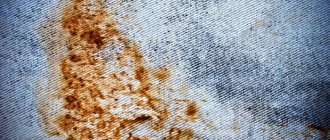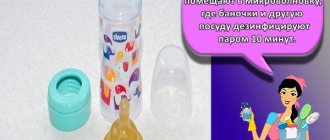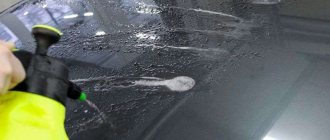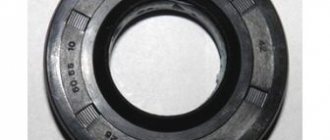Update date: 07/23/2020 11:19:20 14631 Share:
Author: Dina Frish
*Review of the best according to the editors of simplerule.ru. About the selection criteria. This material is subjective in nature, does not constitute advertising and does not serve as a purchase guide. Before purchasing, consultation with a specialist is required.
Silicone grease is an indispensable material in construction and farming, industry and mechanical engineering. Popularly known as sealant. In its structure, it is a solid substance that adheres firmly to the material. And if silicone gets on the same clothing or interior item, it will be difficult to get rid of it.
We have prepared for you ways to remove silicone grease stains from various surfaces and materials.
Cleaning methods
To remove silicone grease, there are different options to remove traces of sealant:
- soften;
- cutting down;
- rub off;
- wash.
The mechanical method is suitable for working on linoleum. Use a scraper and spatula to remove a thick layer of sealant. Its remains are removed with an abrasive substance and a scraper. It is also possible to dissolve silicone grease with a special solvent, which is sold in specialized household chemical stores. It is recommended to first consult with a manager who will help you choose an effective remedy.
Silicone sealing lubricants come in one- and two-component types. The first option is used in everyday life, the second - for industrial purposes. The sealant contains different types of vulcanizing agents: alcohol, acid, oxime, amide, amine.
Acidic silicone from the surface of stainless metal products is safely dissolved with concentrated acetic acid - 70% essence. During work, special care should be taken, since acetic acid can cause burns to the mucous membranes of the eyes, nasopharynx, respiratory tract and skin of the hands.
Remains of alcohol sealant can be removed with medical, denatured, technical alcohol or plain vodka. Traces of neutral silicone can be easily removed with gasoline, acetone, white spirit, and alcohol solvent. Cotton gloves guarantee skin protection when working with solvents.
Universal formulations include Penta-840 and Antisil, which can be purchased in specialized stores. The products are designed to clean the surface of silicone grease, the vulcanizing agents of which can be of any type. The purchased product guarantees an effective result and will not spoil the surface being treated.
Removing stains from clothes
Dry cleaning specialists will help remove silicone stains from a down jacket, jacket, jacket. But such a solution is not always acceptable. In some cases, it is not possible to spend 2-3 days waiting for the item to be returned after cleaning, and you don’t want to spend money.
At home, several methods are used to remove silicone stains from clothes. Each of them has positive and negative sides, so let’s look at them in more detail.
- The mechanical method involves removing pieces of silicone using a sharp knife. The fabric is stretched in one layer, and then, carefully picking up the silicone film, remove it piece by piece. You must act very carefully so as not to damage the fabric.
The mechanical method will only help against fresh stains that have not had time to dry.
- The chemical method is based on the destruction of the dried film using a solvent. The store sells many products that can cope with silicone-based mixtures (for example, Penta 840, Antisil). The product is sprayed onto the stain, the film is allowed to dissolve, and then the remaining dirt is washed off.
Before cleaning clothes with a chemical for the first time, test the strength of the dye by spraying the solvent on the clothes in an inconspicuous place. If the product does not damage the paint, it can be used.
- For old stains, the folk method is recommended. The dried film is steamed with an iron through wet gauze. After this, the softened silicone is much easier to wash off.
We recommend: How to clean the floor from different types of stains and heavy dirt
Cleaning sealant from tiled and enamel surfaces
Tile and acrylic are sensitive to abrasive cleaning agents. To remove traces of silicone caulk, use a razor blade or knife to carefully remove beads and thick layers of caulk without touching the top layer of the tile or tub. A solvent will help remove any remaining material, allowing it to sit for 2-3 hours after application. After softening, the silicone layer turns into a jelly-like substance that can be pryed with a sharp object and quickly removed from the acrylic or tiled surface. At the final stage, wash the area to be cleaned and wipe dry with a dry cloth.
Removing stains from the floor
To remove silicone stains from linoleum, Penta-840 is the best solution. Acid-based compounds will be helped to dissolve vinegar essence, but it is important to make sure that it does not destroy the linoleum itself.
Silicone is removed from tiles in three stages:
- First, the coarsest sagging is cut off with a knife.
- Then the contaminated area is moistened with a solvent and left for several hours.
- After this, it is easy to pick up the softened film with a knife or spatula and remove the pieces.
Finally, we note: the sooner you start removing stains from the silicone composition, the easier it will be to do it. Don't put off cleaning!
The sealant is difficult to remove from the surface
Difficulties in removing silicone grease in one piece often arise when the wrong product is chosen that effectively removes traces of softened sealant. There is also a risk of purchasing low quality lubricant. To resolve this issue, it is recommended to carry out the treatment several times, using a sponge or a clean cloth soaked in a solvent. This procedure should be carried out until the remaining sealant begins to curl into pellets, which can then be easily removed with a dry cloth.
Layers of old silicone sealant located next to the tiles that are not covered with an enamel layer are very difficult to clean. The grease and the tile are bonded to each other as firmly as possible. To solve the problem, you will need not only a sponge soaked in solvent, but also a scraper or pumice stone, which mechanically removes the remains of the softened sealant.
Mechanical cleaning
It is advised to remove fresh, not yet hardened sealant with a sharp knife or blade. It is necessary to cut carefully to the very base of the fabric. The remaining greasy residue on clothing is washed off with warm water and soap or dishwashing detergent. Clean with an iron brush and coarse salt.
Old cases
It is not always possible to immediately detect traces of sealant. Therefore, the soiled item will have to be cleaned in other ways. Use liquids that can dissolve silicone to remove stains.
Vinegar essence
70% vinegar is suitable for removing drops of silicone sealant, as it dissolves the substance well. It is necessary to moisten the stain with acid and leave for half an hour. After aggressive exposure to silicone, it is easy to wipe it off with a dry cloth. The effectiveness of the product depends on the type of sealant. The acid destroys the alkaline structure of the sealant.
When working with vinegar, be sure to wear gloves, being careful not to get the liquid on your skin. It is advisable to protect the respiratory tract from penetration of acid fumes using a mask.
The smell of vinegar from clothes can be removed by washing with conditioner.
Rubbing alcohol or vodka
Alcohol compounds have a destructive effect on sealant stains.
To carry out the procedure, you need to moisten a cloth or cotton pad with alcohol, vodka, denatured alcohol, and apply it to the area of contamination. The silicone will begin to roll off, and it will be easy to remove it from the item.
Solvents
Solvents are a good way to remove frozen drops of sealant. They process only natural fabrics. Synthetics can deteriorate from the action of solvents.
Acetone
To remove drops of sealant from things, use pure acetone. In some cases, it can be removed with nail polish remover. But they add various substances that can contaminate the fabric more. Before use, carefully study the composition of the liquid.
Leave a cloth with acetone on the problem area of clothing for several minutes. Place paper on top in 3-4 layers and apply a hot iron.
White Spirit
This solvent is used to clean sealant and glue. It can take effect a few minutes after application. Light stains are wiped off with a cloth soaked in white spirit. After the procedure, the item is washed in a warm soapy solution.
Petrol
Gasoline can be used to clean off any dirt. To do this, soak a cloth in a flammable substance and place it on the silicone stain for a few minutes. Then scrub thoroughly. Apart from the silicone film, there will be no greasy stain left on the fabric.
Peroxide and wash
Hydrogen peroxide is not diluted with water, but take the liquid, moisten a cotton pad with it, carefully wiping off the silicone drops.
The operation is carried out until the liquid stops foaming. Now you need to rinse and wash the item of clothing.
Special means
Some people don’t believe in the effects of folk remedies, so they prefer professional ones. The chemical industry offers products that successfully remove sealant from any type of fabric.
"Antisil"
Liquid translucent silicone thinner allows you to remove sealant stains from any surface. Apply the product for 10-15 minutes. After removing the sealant, wash off the residue under running water.
"Penta-840"
The silicone film is easily separated from the fabric if exposed to the product for several minutes. When kept longer, the sealant breaks down. But before removing a stain from clothing, it is worth checking the effect of the solvent on an inconspicuous place of the item. The composition is used at any air temperature, but it does not retain its properties well when frozen.
Vegetable oil
Oil has been used to remove paint and grease for a long time. You can remove dirt from the fabric using a cotton pad soaked in vegetable oil. It is necessary to hold until the silicone begins to dissolve. All you have to do is wash the item manually or in an automatic machine.
Car brake system cleaner
Brake cleaners actively remove tarry substances and grease. A stream of liquid is directed at the stain. After a few minutes, you need to clean the dirty area with a soft cloth.
Before using the product, test it on the fabric so as not to spoil the item with an aggressive liquid.
Baby soap
A minor stain should be removed with warm water and baby soap. Apply foam to the damaged area of clothing. Wash thoroughly after a few minutes. The procedure should be repeated until the sealant residues completely disappear.
Sealant on plastic - how to clean
Due to its low adhesion, removing silicone grease from a rubber or plastic surface is not difficult. You can quickly and safely remove stains from a plastic tray, shower stall, or acrylic bathtub using the following method. Using a solvent, moisten the surface of the sealant and leave it for half an hour to an hour. After time has passed, wash off any remaining traces with a degreasing agent. This technique is suitable for removing grease that was not applied with a Primer. Preliminary application of the composition significantly complicates the solution of the problem.
Manufacturers have developed special sealants for automobile rubber seals. It is possible to clean rubber from silicone grease for cars using similar compounds used for cleaning with conventional sealant. The lubricant bottle contains information about the composition to help you choose a suitable and safe cleaner.
Determining the type of lubricant
In its chemical nature, silicone is close to rubber. In order to create a lubricant (as well as a sealant, glue or other silicone mixture), the silicone must be dissolved in a suitable liquid.
There are two types of solvent most commonly used:
The cleaning method depends on the type of solvent. Therefore, in order to remove the stain as quickly and completely as possible, before starting work you should read the composition of the product on the packaging.
Removing silicone sealant from the skin of the hands
You can clean the skin of your hands from silicone grease using a saturated saline solution. Place your hands in the water and wait 10-15 minutes, then remove the dirt with a washcloth. This method is suitable if there are no wounds, scratches, inflammation, or allergic rashes on the surface of the skin. If available, you can use laundry soap, which will cleanse the skin of impurities after several approaches. Between using soap, it is recommended to use heated sunflower oil. Apply it in a small amount, then massage and rinse with soap and warm water.
What is silicone?
Silicone grease is a white translucent mass that is widely used not only in industry and everyday life, but also in aviation. It is used to preserve rubber parts and lubricate them, and protects various interior parts and equipment from destruction. This material has the property of transferring heat during the operation of electrical elements and can withstand temperature fluctuations from -40 to +250C.
In addition, silicone grease is widely used in equipment for dentistry, printing, plumbing, and in chemical laboratories for sealing and lubricating special utensils. In everyday life, silicone can be used to lubricate locks, hinges, seams, seal mechanisms, and seal parts of water models.
Remove silicone grease from furniture and car
There are several ways to remove sealant from furniture. To choose the best option, it is important to consider the type of material from which the furniture is made. Silicone is removed from plastic furniture using a spatula, the remaining greasy traces are treated with purified gasoline or acetone.
Furniture made from natural wood requires careful and careful handling. You cannot use a solvent for cleaning, as there is a risk of disturbing the appearance of the surface, especially if it is varnished. The sealant mixture is carefully removed with a wooden scraper. This method requires care and enough free time. As an alternative to a wooden scraper, you can use a plastic model or a simple bank card made of durable cardboard. Traces of silicone grease are scraped off with slight pressure on the side edge.
Traces of silicone sealant on car windows are removed using detergents such as “Mr. Muscle”. The product is applied to the contaminated area with a sponge, after 20 minutes the surface is washed with a stream of water and wiped dry. You can also use cleaning mixtures that contain ammonia or ethyl alcohol. To achieve an effective result, it is recommended to contact experienced car wash employees. Professionals are equipped with special car shampoos designed for high-quality and safe removal of all types of contaminants.
Outerwear
Removing stains from outerwear is complicated by the fact that the fabric simply cannot be laid out in one layer and the stain treated. The first thing to do if you have stained a jacket or down jacket is to wash the item in the washing machine at least twice with high-quality powder. Use a dryer between washes. You can add oxygen bleach or stain remover to the machine when washing.
Next, the jacket needs to be treated with a special silicone remover. You can find such a drug in hardware or construction stores. Grease stains from thin fabric are very difficult to remove due to the thinness of the material. Therefore, aggressive chemicals cannot be used. To remove grease stains from outerwear, it is better to use vinegar and special sponges that will not damage the fabric.
Attention to detail
Cleaning of sealant must be carried out in a well-ventilated area, away from pets and small children. Before removing lubricant from fabric with gasoline, acetone or other solvent, it is necessary to test the effect on the structure of the material in an inconspicuous area.
For grinding glass and tiled surfaces, it is better to use pumice, since sandpaper leaves deep scratches when processed. Timely removal of traces of sealant increases the effectiveness of the result; often old stains are difficult to remove even with a solvent.
Removing silicone grease from the skin of your hands, clothing and other surfaces is a complex and time-consuming process. In order to prevent this problem, you should carefully cover the areas treated with sealant with protective film, paper or cloth.
Silicone O-Ring Grease - Your Complete Guide
Many people think of lubricants and grease as an afterthought.
Nice to have to prevent squeaks and rust.
But look:
This is far from true.
Lubrication is as important to mechanical engineering design as screws, welding, bearings, gears, couplings, brakes, couplings, flywheels, shafts and axles.
In my university's Mechanical Engineering and Design textbook, lubrication has its own chapter, taking up 6% of the 958-page seventh edition. It comes after rolling bearings and before gears.
How big do you think the lubricants industry is?
Huge. In 2015, the global lubricants market was worth more than US$55 billion. And he is growing...
… This amount of consumer spending comes with huge marketing expenses for the lubricant and grease company. Marketing competition is fierce and sends mixed messages, is confusing and creates too many grease choices.
So, when it comes to the niche lubricant category such as O-rings, pressure washing hoses, pumps and the pressure washing industry as a whole, what lubricants and greases do you need in your toolbox?
Let's dive into the nitty-gritty.
Go to each section:
- Lubrication Basics
- Silicone grease for general use
- Silicone Grease Safety
- Why lubricate rubber O-rings?
- vs. Grease vs Oil
- Which handset should you buy?
- How to Apply and How Often to Reapply
Silicone can
Lubrication Basics (And Why Silicone Lubricant Is Best for Rubber O-rings)
Is there a difference between calling a lubricant: grease, grease, grease or oil?
People tend to use everything interchangeably. In this article, we treat lubricant, lubricant and grease as the same thing, and oil as different.
Here's the main difference: At room temperature:
- The grease has a high viscosity (like peanut butter).
- The oil has a lower viscosity (like vegetable oil).
Grease is used for parts that will operate at low speed and normal temperature.
Oil lubrication is used on parts that operate at high speeds and temps.
You lubricate the mower wheel axles. You are adding oil to the low power engine of a Honda lawnmower.
What is the point of lubrication?
All types of lubrication, including oils, greases, and sometimes water or air, are used to reduce wear by reducing friction and heating of moving parts. Any substance that achieves this can be called a lubricant.
General characteristics to consider when deciding which type of lubricant is best:
- Stability . You want the lubricant to maintain its consistency while doing its job of reducing friction and heat between moving parts. If it becomes harder or softer during operation, it is said to be unstable.
- Temperature effects . What happens to a lubricant (grease or oil) at different temperatures? Grease doesn't work well at high temperatures because it can't get rid of heat like oil. At low temperatures, grease hardens and can clog parts and prevent them from moving.
- Waterproof . Depending on the use, you will need the lubricant to have a certain amount of water resistance to continue to function properly even in the presence of water.
- Pumping ability . Most plants that operate equipment will have some form of automated lubrication system. These systems pump grease through lines and nozzles to parts that require lubrication. This method saves money. Some lubricants do not move through lines under pressure, so pumpability is important.
- Consistency . The National Lubricant Institute (NLGI) offers classification tables for grease consistency, ranging from liquid (canola oil) to normal (peanut butter) to solid (cheese). To get the lubricant where it is needed and prevent it from leaking, the consistency of the lubricant is important when choosing.
What does the lubricant consist of?
There are different types of grease for different purposes. All greases have a similar anatomy and consist of 3 main parts:
Classification of different types of lubricants
In the diagram above you can see that the lubricant consists primarily of a base oil (mineral or synthetic) with a thickener (fatty acid plus soap lye) to hold the base oil and an additive package (usually graphite/molybdenum to improve temperature stability, performance at extreme pressure, etc.) together.
The most common way to classify mineral oil based grease is by the thickener: lithium grease, sodium grease... But when it comes to synthetic base oil grease, it is classified as follows: silicone grease, etc.
What is the best use for each type?
This is a difficult question because it is impossible to answer without knowing the exact conditions in which the lubricant will be used. Conveyor belt pulley bearings operating in extreme heat in Australia will require different lubrication than in extreme cold in Northern Canada.
With that said, here's the gist:
Base oils
Mineral oil lubricants are used at constant operating temperatures. Synthetic base oils perform better in a wide range of conditions.
Types of thickeners
- Lithium is the most common and is used for bearings.
- Calcium for low temperature bearings and bearings with water nearby (pumps).
- Sodium is best suited for high temperature bearings.
- Aluminum has better oxidation resistance and is best suited for reciprocating moving parts such as elevator drives and vibrating screens.
Additive package
Additives are added to enhance or suppress the positive or negative properties of the base oil. Graphite or molybdenum may be added to improve stability at high temperature and pressure. Others are used to suppress oxidation properties and improve corrosion resistance. Antifoam additives are added to most motor oils.
Why Silicone Lubricant Is Best for Rubber O-Rings and Seals
Most o-rings are made of synthetic rubber. Namely: nitrile, EPDM and neoprene. It is true that petroleum products destroy natural rubber. But if the O-ring is made from, for example, nitrile (a material used in automotive fuel and oil lines), then there is no problem using petroleum lubricant to lubricate the O-ring.
Problem : How can I tell if the O-ring is made of synthetic rubber or regular natural rubber? It is impossible to tell just by touching it, by looking at it. And most owner's manuals don't specify the material of the O-rings and seals. It can tell you it's rubber, but is it synthetic or natural rubber?
Solution: For safety, use silicone lubricant on O-rings and seals. Silicone grease is waterproofing and lubricating. It costs $10 for a small tube and is available at all auto parts stores. Be careful to use silicone lubricant on the O-rings and rubber gaskets in pressure washer tubes, hoses, and pumps.
Five Common Uses for Silicone Oil Synthetic Grease
Silicone grease has almost limitless uses, but here are the five most common:
Scuba and underwater devices
Divers use silicone lubricant to seal and protect dry suit linings. Fishermen use it to protect the rubbers of their guns and keep them flexible. Snorkelers and swimmers use it in seals for underwater lights and to keep underwater camera body seals from drying out.
Watch
When watches are assembled by watchmakers or master craftsmen, silicone lubricant is applied to the gaskets to facilitate reassembly and prevent tearing.
Plumbing
Silicone grease is so common in plumbing that it is often referred to simply as plumbing grease. Be it faucet fittings, O-rings, water filter housing threads
Pens
Fountains and other enthusiasts and repair professionals love to take apart and tinker with their often expensive pens. In the process, they come into contact with latex bags, rubber seals and O-rings, and ebonite (hard rubber) pistons/feeders/cylinders. Reassembly uses 100% silicone lubricant to seal and protect everything and make assembly easier.
Pressure Washer Pump, O-Rings and Hose Threads
Professional car wash contractors use lubricant on hose connections and O-rings to ease installation and protect the O-ring from damage. It is also used during pump repair and assembly to facilitate installation of the unloader valve.
How safe are silicone-based lubricants for use in the home, garage and construction site?
There are two types of silicone lube: safe and food-safe.
Food grade silicone lubricants are approved for safe use in equipment and parts that may come into contact with food during production, processing, packaging, transportation, and even in production equipment that packages, bottles and cans food products. food grade silicone grease.
The primary silicone oil most commonly used in silicone lubrication gels is polydimethylsiloxane (PDMS). Transparent, inert, non-toxic and non-flammable
After reviewing the Material Safety Data Sheets and data sheets of 8 different silicone greases on the market, here is the gist of the risks associated with silicone paste:
- Danger - No.
- First Aid - If swallowed, in eyes or on skin, seek medical attention after immediately washing area (mouth, eyes, skin).
- Fire extinguishing - Non-flammable, but burns. Use water jet on fire.
- Accidental Release - Causes release on slippery surfaces which may become hazardous.
- Safe handling - No special conditions.
- Exposure - No. Use safety glasses and gloves as specified in the workplace.
- Toxicological - Does not cause irritation.
- Ecological - Without special conditions.
- Disposal - No special precautions. Follow local regulations.
- Transportation - No conditions.
Why do you even need to lubricate your pressure washer hose and tube O-rings?
Extends O-ring life.
Here's how:
- Acts on the surface film that seals the O-ring and the metal surface as one.
- Protects the O-ring from cracking, pinching and cutting.
- Speeds up installation.
- Seat O-ring.
Should I use a spray can or silicone gel lubricant to apply to rubber joints?
Avoid using cans of silicone lubricants. The aerosol can will contain a petroleum-based propellant and a solvent for spraying. There will only be 5% (or so) silicone. Once the spray evaporates, the silicone will remain. Not as bad as regular petroleum rubber lubricant...
... Why not use gel? If the O-ring is in a difficult place, apply silicone gel to the tip of a long, thin screwdriver to get it in the right place.
Best Silicone Lube Brands and Where to Buy Online
Search results on Amazon.com
A search for “silicone lube” on Amazon.com yields 14,039 results. The search term "silicone lubricant" found 5,559 results.
How do you know which one to buy?
I'm glad you asked because we're going to watch it right now. Since we've established that an aerosol can is not ideal, we have two options: Do you need lubricant or oil?
Best silicone lubricant
Danco Silicone Grease
This Danco tube will suit all your silicone lube needs.
Of course, as we learned in the article, it is waterproof and great for rubber O-rings and seals.
You'll notice that the packaging says "Keep out of reach of children" but don't worry, these are just precautions and should not be eaten or used as lip balm (or anything similar). You can see the material safety data sheet here.
Best Silicone Lube Oil
Silicone oil for drops 3-IN-ONE
Why do you need silicone drip oil lube?
Silicone drip oil is an option if you want to lubricate several O-rings at once and quickly.
Here's how:
Place them all in a bag, drain off some oil and shake the bag. Oil drip can also be used with an applicator brush or by dipping the piece into a cup of oil.
How often should pressure washer rubber o-rings be reapplied (and proper technique)?
There is no 100% correct answer to this question. You'll hear different arguments from everyone you ask. A safe option is to apply new silicone lubricant in each of the following situations:
When replacing O-rings
You will definitely want to use silicone lubricant when installing the new o-ring. This will make the installation easier and will help seat the o-ring
.
Each time you reconnect the pressure washer hose to the tube and pump
Adding silicone lubricant before each use is, in my opinion, unnecessary. However, I often leave my hose connected to the wand and pump and reel it in for storage until next use. If I had to disconnect the hose every time I use it, exposing it to dust and heavy water, I would probably lubricate it before reconnecting it.
Here's a video from Parker Support on proper O-ring lubrication techniques:
You can also see the difference between the grease and oil varieties of lubricant.
Sources
- Silicone Grease. Wikipedia.org.
- Polydimethylsiloxane (PDMS). Wikipedia.org.
- REVIEW: Lubricants Why so many options? www.JonEakes.com November 21, 2015
- PDF: "What is the difference between paraffinic, naphthenic, hydrotreated and synthetic oils?" www.lubegard.com. Internet. April 21, 2022.
- Wright, Jeremy. "Lubrication Fundamentals". Machine lubrication May 2008
- Differences in Base Oil Groups.MachineryLubrication.com. Internet. April 21, 2022.
- Selecting the correct lubricant thickening system. www.NyeLubricants.com. Internet. April 21, 2022.
- Global automotive lubricants market: overview. www.TransparencyMarketResearch.com.
About the Author: Jamie has been testing and reviewing pressure washers for 7 years. He worked as a commercial pressure washer in a waste treatment plant for 3 years, and has been using pressure washers in commercial and domestic applications for over 15 years during that time. He is also a mechanical engineer and, having worked in the mining industry, developed several turnkey pads for washing light industrial vehicles.
.
Useful tips
Aggressive substances are usually used to remove silicone grease. In order not to completely ruin the item, you must first test the chosen product. To do this, apply the selected product with a cotton swab to an inconspicuous area on the product. This can be an inner seam or a place under the collar, on the back of the cuff. If there is no reaction after an hour and the cleanser does not damage the fabric, it can also be used to clean the front side of the garment.
When removing a stain with a cotton swab, it is necessary to direct movements from the edges of the stain to its center. This is especially important if solvents are used for cleaning. If you rub the dirt in different directions, you can spread the stain over an even larger area.
After cleaning the product with aggressive substances, you must wash it, rinse it twice in a large amount of water, or set the automatic machine to a mode with additional rinsing. This is necessary to ensure that all harmful substances are removed from the fabric. After treatment, it is advisable to dry clothes in the fresh air.
As you can see, there are several reliable ways to remove silicone grease from clothing or fabric items. Don’t be upset if your husband once again comes in with soiled clothes - you can save them even at home with your own hands, using simple and affordable means.
It doesn’t matter if yellow stains appear on your down winter jacket after an unsuccessful wash. To cope, It happens that you have to wash vomit stains from upholstered furniture or clothing, and, It is very difficult to clean a mattress from red stains and the smell of urine, but there are methods. You can. Removing stains is always a long and labor-intensive process, especially if it concerns traces of food or











